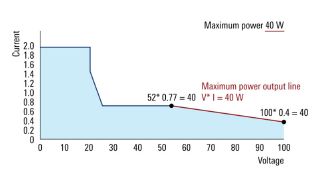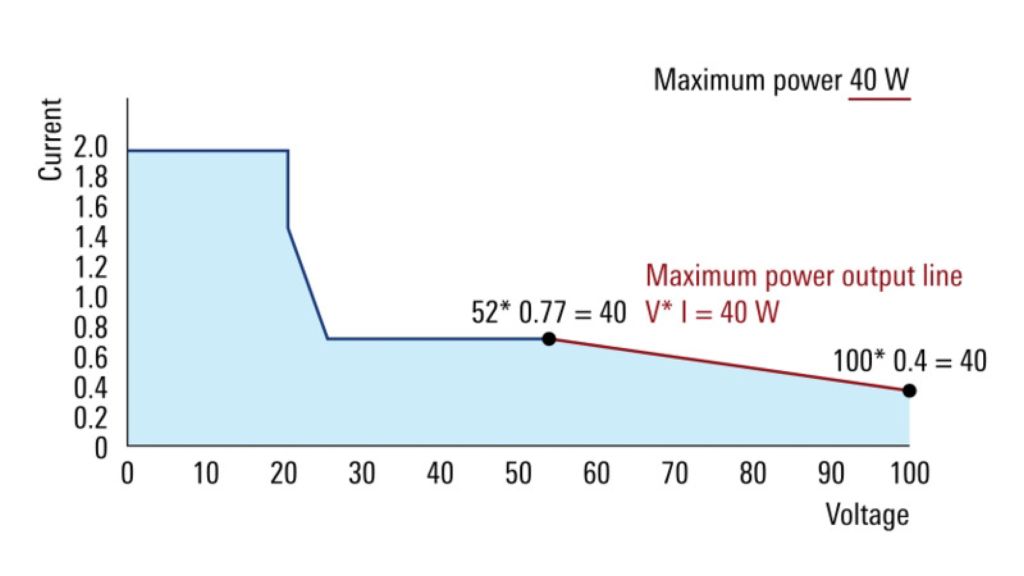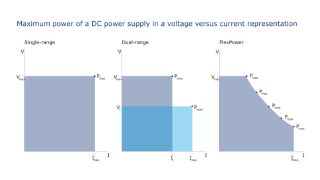R&S®Essentials | Power supplies fundamentals
Understanding Derating Curves
Author: Paul Denisowski, Test & measurement expert
The following will explain what power supply derating curves are and how to interpret them.
Benchtop power supplies have three primary specifications: maximum output voltage (in volts), maximum output current (in amperes) and maximum output power (in watts). These are usually specified per channel for both single and multichannel power supplies.
When operating a benchtop power supply, the user normally configures both – the desired output voltage and the output current limit, or the maximum amount of current that can be drawn from the power supply. The latter is usually for safety reasons and/or to protect the device under test. The output power is the product of the configured output voltage and the amount of current being drawn by the load (P = V * I).
What are derating curves used for?
Mathematically, if both voltage and current can be varied then there are many ways to produce the same output power. For example, 40W could be produced by using 40V and 1A, 20V and 2A, or even 100V and 0.4A.
In practice, all power supplies have limits on the output voltage and current they can produce. In many cases, maximum current is the limiting factor. For example, it’s relatively easy to design a 40W power supply that delivers 1A at 40V, but it’s not quite as easy to build a supply that provides 40A at 1V.



















